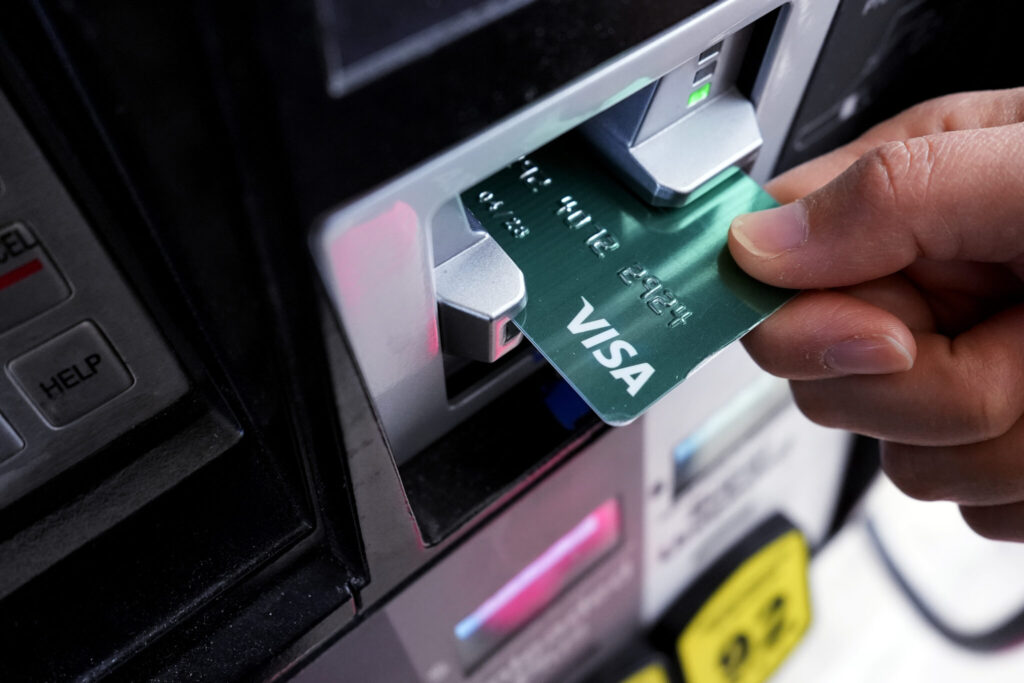Fed lowers rates/ borrowing costs decline/ impact of rate cut on consumers/ savings rates after Fed cut/ Newslooks/ NEW YORK/ J. Mansour/ Morning Edition/ The Federal Reserve cut its benchmark interest rate by half a percentage point, marking the first rate reduction in over four years. This shift comes after a lengthy period of high rates aimed at controlling inflation and signals the Fed’s growing focus on supporting the job market. The rate cut will have widespread effects on borrowing costs for mortgages, credit cards, auto loans, and savings returns, as more reductions are expected in the coming months.

The Fed’s Half-Point Rate Cut: What Consumers Need to Know: Quick Looks
- Rate Cut Overview: The Fed cut its benchmark rate by 0.5%, its first rate cut in over four years, bringing it down to between 4.75% and 5%.
- Inflation Progress: After 11 rate hikes since 2022, inflation has slowed significantly, leading the Fed to ease borrowing costs.
- Consumer Impact: Lower rates will affect mortgages, auto loans, credit card debt, and savings yields, though the full effects may take time to materialize.
- Job Market Focus: The Fed’s shift in focus aims to support a cooling job market, with further rate cuts expected later this year.
How the Fed’s Rate Cut Impacts Your Debt, Savings, and Loans
Deep Look:
The Federal Reserve has officially begun lowering interest rates, cutting its benchmark rate by half a percentage point on Wednesday. This marks a significant shift in monetary policy after 11 rate hikes over the past two years, which were designed to curb inflation. The central bank now feels inflation is under control, having dropped from a peak of 9.1% in mid-2022 to 2.5% as of August.
This rate cut, the first in more than four years, brings the Fed’s key rate to a range between 4.75% and 5%, a move that signals a new priority for the Fed: supporting the job market as it begins to cool. Fed Chair Jerome Powell emphasized that the decision was driven by confidence in the progress made on inflation and a desire to stabilize employment conditions. “We don’t think we’re behind — we think this is timely,” Powell said at a news conference.
More rate cuts are expected in the coming months, with the potential for further reductions in November and December, depending on inflation and job growth trends. But what does this mean for everyday consumers?
Impact on Savings and Interest Rates
For savers, the rate cut will gradually lead to lower yields on savings accounts, certificates of deposit (CDs), and other interest-bearing accounts. While recent rates on savings instruments have been historically attractive, they may start to decline as the Fed continues to lower its benchmark rate.
Christine Benz, director of personal finance at Morningstar, advises consumers to lock in current yields if they don’t need immediate access to their cash. “The really great yields that we’ve had recently may go lower,” she said, suggesting that longer-term CDs may make sense for those looking to secure their savings in higher-yield products.
Matt Brannon, a personal finance expert at MarketWatch, added that high-yield savings accounts remain a viable option for those looking to preserve their savings due to their comparatively higher interest rates. However, consumers should be aware that these rates will likely decrease over time as the Fed continues to cut rates.
Credit Card Debt and Other Borrowing Costs
While lower rates offer relief for borrowers, especially those with credit card debt, the effects of a single rate cut may not be immediately noticeable. “This one rate cut isn’t really going to make much of a difference for most people,” said Matt Schulz, a credit analyst at LendingTree.
That said, lower interest rates should eventually translate into better terms for borrowers, particularly those with credit card debt, as average interest rates remain high. The average interest rate on new credit card offers is currently 23.18%, according to WalletHub.
Schulz suggests that consumers take control of their debt by consolidating it through 0% balance transfer credit cards or low-interest personal loans, as these strategies can have a greater impact than waiting for additional Fed rate cuts.
Mortgages and Refinancing
The Fed’s interest rate doesn’t directly control mortgage rates, but it does have a strong influence on them. As the Fed cuts its benchmark rate, mortgage rates are expected to follow suit. Currently, the average mortgage rate stands at 6.46%, already down from earlier in the year, as markets anticipated the Fed’s rate cut.
While many Americans already have mortgages with rates around 5%, LendingTree’s Jacob Channel notes that rates may need to fall further before homeowners seriously consider refinancing. However, the current trend of falling rates could offer an opportunity for those looking to refinance in the near future, potentially lowering their monthly payments.
Auto Loans: What to Expect
For those looking to finance a new or used vehicle, the rate cut offers hope for lower auto loan rates, though the effect may not be immediate. Auto loans for new vehicles currently average 7.1%, with used vehicle loan rates at 11.3%, according to Edmunds.com.
Greg McBride, an analyst at Bankrate, advises consumers to shop around for the best rates, rather than accepting what is offered at the dealership. He added that buyers with strong credit profiles are more likely to benefit from lower rates first, while those with weaker credit may continue to face higher rates throughout the rest of the year.
For borrowers with lower credit scores, Robert Frick, an economist at Navy Federal Credit Union, noted that lenders may try to keep rates high to cover potential losses from delinquencies and defaults. However, he expects rates to eventually come down with further Fed cuts, particularly for used vehicle loans.
Inflation and Job Market
The Fed’s decision to cut rates is partially motivated by the improving inflation outlook. Consumer prices rose just 2.5% in August from a year earlier, down from 2.9% in July, marking the smallest annual increase since early 2021. Meanwhile, the job market has remained resilient, though signs of slowing are emerging. The unemployment rate dipped to 4.2% in August, with employers adding 142,000 jobs, up from 89,000 in July.
Moving forward, the Fed’s rate cuts will be guided by the performance of both inflation and the job market. If inflation continues to cool and the job market remains stable, further reductions in borrowing costs could be expected.
Final Thoughts for Consumers
Consumers should view the Fed’s rate cut as a potential opportunity to improve their financial situations, whether by refinancing loans, consolidating debt, or locking in higher-yield savings products while they are still available. However, personal finance experts caution against making hasty decisions based solely on this one rate cut.
“It’s good news for consumers, but you shouldn’t feel pressured to change your strategy immediately,” Channel said. Instead, consumers should consider their personal financial goals and the timing of future Fed moves when deciding how to adjust their savings and borrowing strategies.







